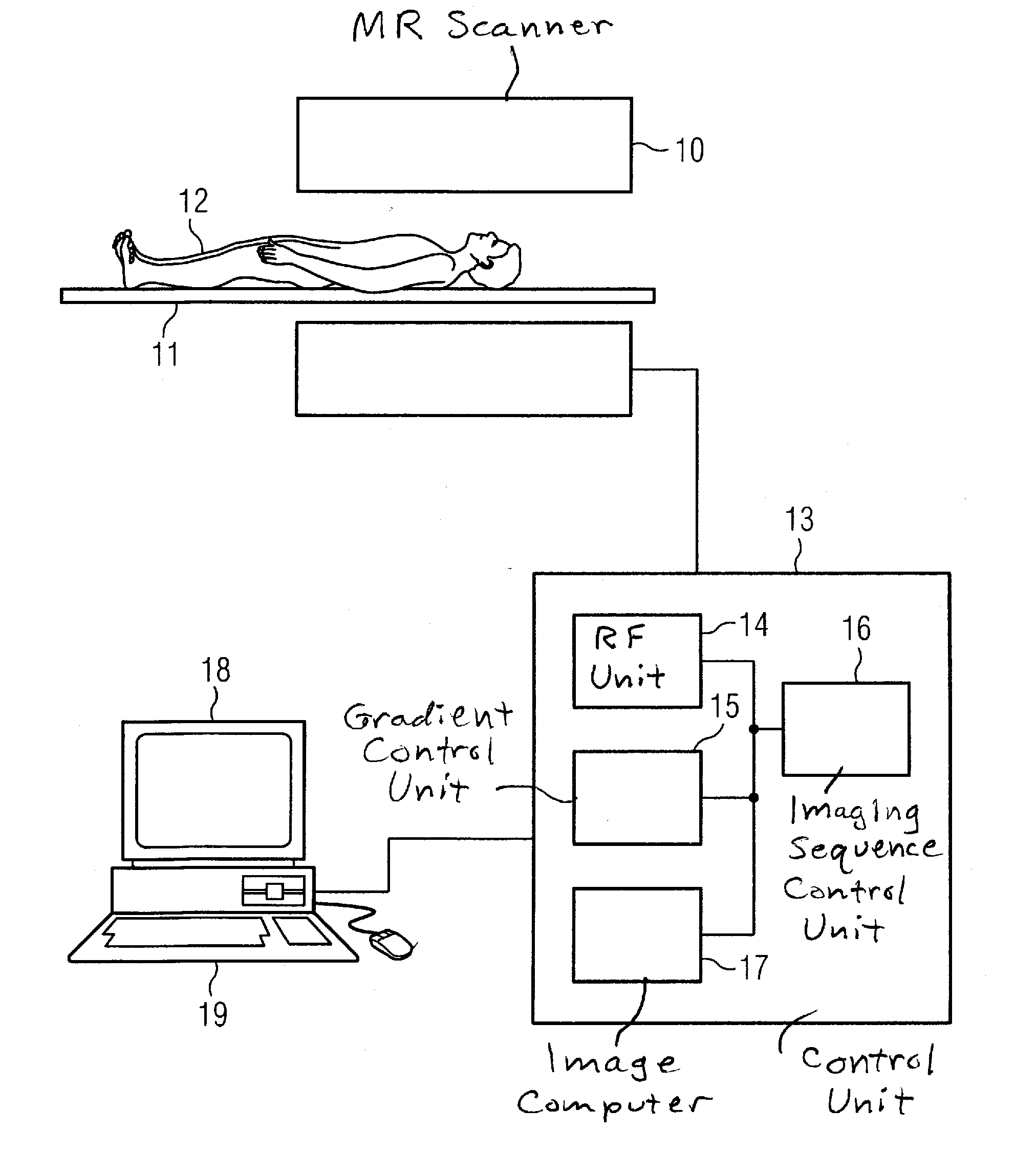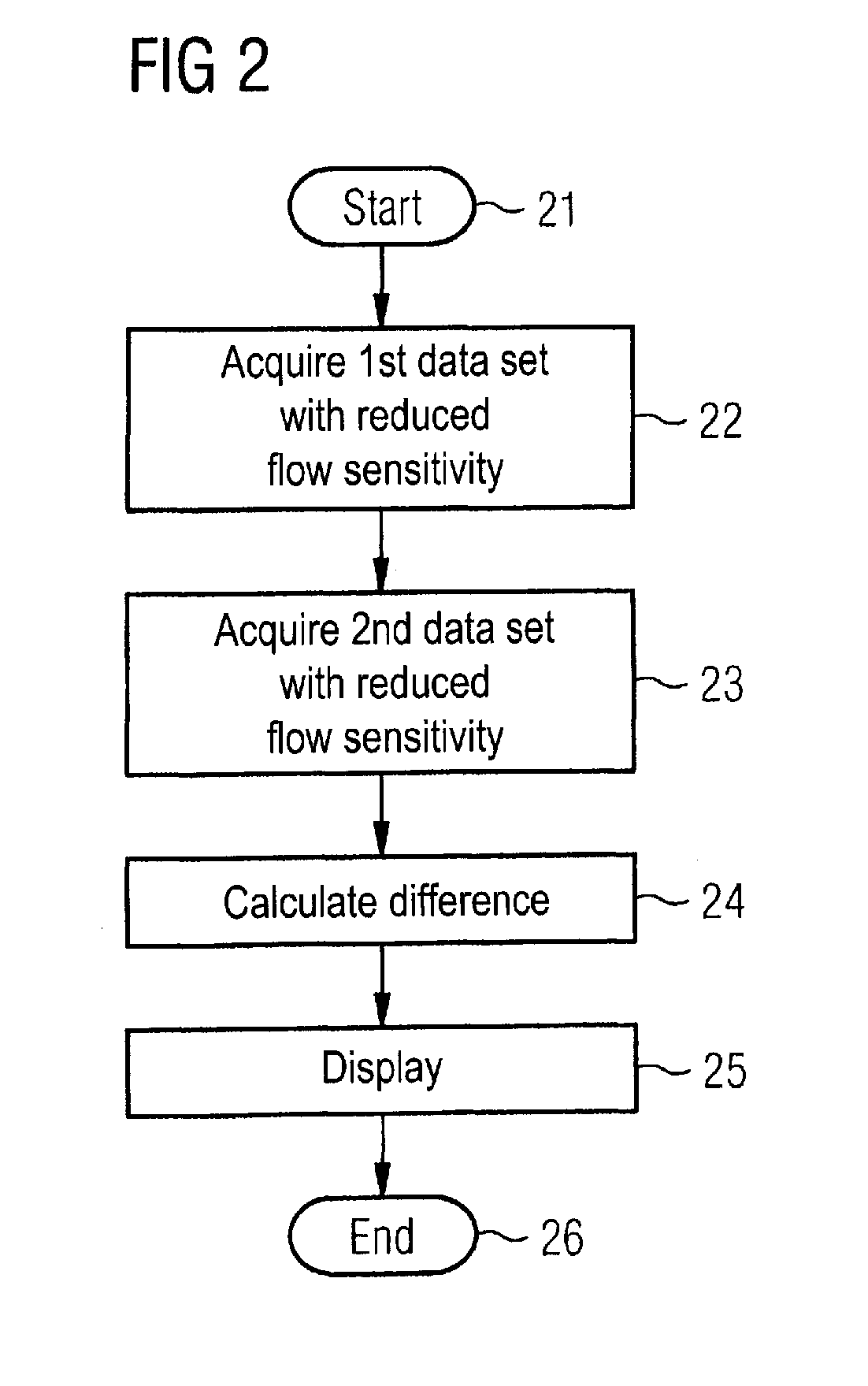Magnetic resonance angiography with flow-compensated and flow-sensitive imaging
a technology flow-sensitive imaging, which is applied in the field of magnetic resonance angiography with flow-sensitive and flow-compensated and flow-sensitive imaging, can solve the problems of difficult cardiac phase finding for many patients, high signal obliteration in the arteries of angiography, and difficult to find cardiac phases, etc., to achieve the effect of reducing or increasing flow sensitivity
- Summary
- Abstract
- Description
- Claims
- Application Information
AI Technical Summary
Benefits of technology
Problems solved by technology
Method used
Image
Examples
Embodiment Construction
[0029]Shown in FIG. 1 is an MR system with which MR angiography images according to the invention can be generated with which a better image quality is achieved via improvement of the MR acquisition with bright vessel depiction. The MR system has scanner 10 that contains a basic field magnet to generate a polarization field BO. An examination subject 12 arranged on a bed 11 is driven into the middle of the magnet where the acquisition of the MR signals from an examination region is implemented by radiation of RF pulses and switching (activation / deactivation) of gradients in the scanner 10. The manner by which MR images can be generated in a pulse sequence with a progression of RF pulses and switching of gradients is known to those skilled in the art and need not be described in detail herein. The MR system is connected with a central control unit 13 with which the MR system is controlled. The central control unit moreover has an RF control unit 14 that controls the switching of the ...
PUM
 Login to View More
Login to View More Abstract
Description
Claims
Application Information
 Login to View More
Login to View More - R&D
- Intellectual Property
- Life Sciences
- Materials
- Tech Scout
- Unparalleled Data Quality
- Higher Quality Content
- 60% Fewer Hallucinations
Browse by: Latest US Patents, China's latest patents, Technical Efficacy Thesaurus, Application Domain, Technology Topic, Popular Technical Reports.
© 2025 PatSnap. All rights reserved.Legal|Privacy policy|Modern Slavery Act Transparency Statement|Sitemap|About US| Contact US: help@patsnap.com



